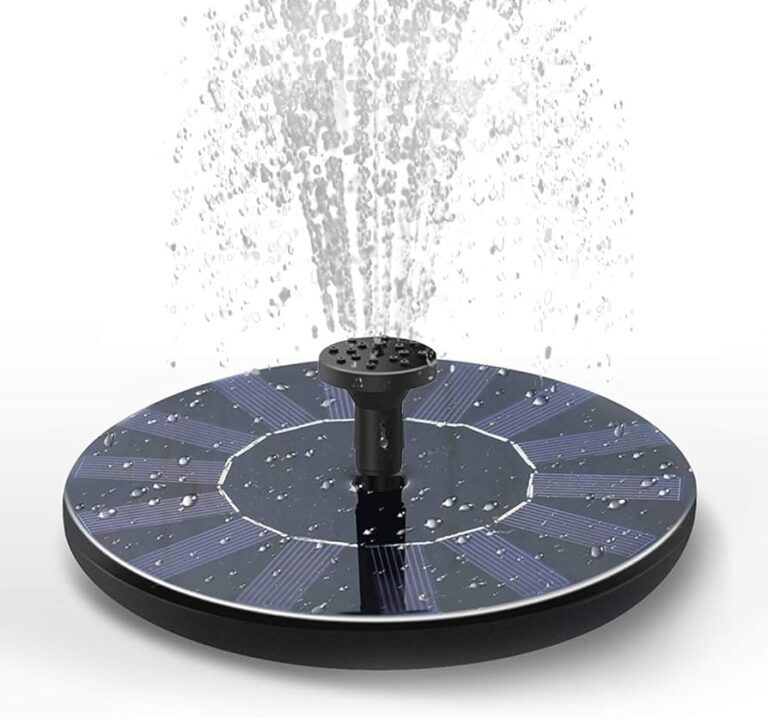How Often to Change Newborn Nappy: Expert Advice
You should change a newborn nappy every two to three hours, or as often as needed. Experts recommend this frequency due to the frequent urination (every one to three hours) and multiple bowel movements (two to five per day) of newborns.
Newborns require frequent nappy changes to ensure their comfort and hygiene. Knowing how often to change a newborn nappy is essential for providing proper care. Experts recommend changing a newborn’s nappy every two to three hours or as needed. This frequency takes into account the regular urination and bowel movements of newborns.
It is important to note that newborns can urinate as often as every one to three hours and have multiple bowel movements each day. By adhering to this guideline, you can keep your newborn clean, dry, and comfortable. We will explore why frequent nappy changes are crucial for newborns and provide tips for maintaining good nappy hygiene.
Importance Of Regular Nappy Changes
Regular nappy changes are important to keep your newborn clean and comfortable. Experts recommend changing diapers every two to three hours, or as often as needed, as newborns can urinate frequently and have multiple bowel movements per day. Keep an eye on wetness indicators and avoid leaving wet diapers on for more than three hours during the day.
Ensuring Comfort And Hygiene
Regularly changing your newborn’s nappy is crucial for their comfort and hygiene. Babies have sensitive skin that is prone to irritation and discomfort, especially when exposed to wet or soiled nappies for extended periods. By changing their nappy frequently, you can ensure that your little one stays dry and comfortable throughout the day.Preventing Diaper Rash
One of the most common issues newborns face is diaper rash. This painful condition occurs when the skin is exposed to moisture and irritants for too long. By changing your baby’s nappy regularly, you can help prevent diaper rash from developing. This is because frequent nappy changes reduce the time your baby’s skin is in contact with wetness, preventing irritation and inflammation.Maintaining Healthy Skin
Keeping your newborn’s skin healthy is of utmost importance, and regular nappy changes play a significant role in achieving this. By promptly changing your baby’s nappy when it is wet or soiled, you can minimize the risk of bacterial growth and infection. This not only keeps your baby’s skin clean and healthy but also helps to prevent more serious skin conditions from developing. In conclusion, the importance of regular nappy changes cannot be underestimated. Not only do they ensure your baby’s comfort and hygiene, but they also help prevent diaper rash and maintain healthy skin. Remember to change your newborn’s nappy every two to three hours or as often as needed, to keep them happy and healthy.
Credit: www.nanit.com
Frequency Of Nappy Changes
Newborn nappies should be changed every two to three hours, or as often as needed. Babies may urinate every one to three hours and have multiple bowel movements a day. Keep an eye on wetness indicators and avoid going longer than three hours without a change.
As a new parent, one of the most common questions you may have is how often to change your newborn’s nappy. Keeping your baby clean and comfortable is essential for their overall well-being. The frequency of nappy changes may vary depending on your baby’s age, their urinary patterns, and bowel movements. In this article, we will explore the expert recommendations for nappy changes, understand newborn urination patterns, and monitor bowel movements to ensure your baby stays happy and healthy.
Expert Recommendations
According to experts, you should aim to change your newborn’s nappy every two to three hours, or as often as needed. This is because newborns have a frequent need to urinate, which can occur every one to three hours. Additionally, they may have between two and five bowel movements a day. By changing their nappy regularly, you can prevent discomfort, rashes, and maintain good hygiene for your baby.
Understanding Newborn Urination Patterns
Newborns have small bladders and limited control over their urination. They produce small amounts of urine frequently throughout the day and night. It is crucial to monitor their nappy for wetness and change it promptly to prevent any discomfort or irritation. Some parents find it helpful to use nappies with wetness indicators, which change color when wet, making it easier to know when it’s time for a change. Remember, each baby is unique, and their urination patterns may vary slightly.
Monitoring Bowel Movements
In addition to urination, it is important to keep track of your baby’s bowel movements. Most newborns have frequent bowel movements, typically ranging from two to five times a day. Monitoring their bowel movements helps you identify any changes in their digestive health and ensures timely nappy changes. If you notice any irregularities in your baby’s bowel movements, such as constipation or diarrhea, it’s crucial to consult with your pediatrician for appropriate guidance and care.
Signs That Indicate A Nappy Change
As a parent, it is important to stay vigilant and responsive to your newborn’s needs, especially when it comes to nappy changes. Regular and timely nappy changes are crucial for maintaining your baby’s hygiene and comfort. But how do you know when it’s time to change your little one’s nappy? Look out for these signs that indicate a nappy change is needed.
Checking For Wetness
One of the primary signs that it’s time for a nappy change is when the nappy feels wet or damp to the touch. A wet nappy can cause discomfort and irritate your baby’s delicate skin. Thankfully, most nappies are designed with a wetness indicator, such as a color-changing line in the front, to help parents easily identify wetness. Keep an eye on this indicator and change the nappy as soon as you notice it has changed color.
Identifying Discomfort
Another sign that your baby needs a nappy change is when they become fussy or show signs of discomfort. Babies are unable to verbalize their discomfort, so they rely on non-verbal cues to communicate. Watch out for signs such as squirming, restlessness, or excessive crying. These are often indicators that your baby is uncomfortable and may need a fresh nappy. Responding promptly to their discomfort will help ensure their comfort and well-being.
Observing Odor
In addition to checking for wetness and discomfort, it is essential to trust your sense of smell. If you detect an unpleasant odor coming from your baby’s nappy area, it is a clear indication that a nappy change is needed. Newborns have frequent bowel movements, and allowing your baby to stay in a soiled nappy for an extended period can lead to skin irritation and discomfort. Changing the nappy promptly will help keep your baby clean and prevent potential skin issues.
Being attentive to the signs that indicate a nappy change is essential for your baby’s comfort and well-being. Remember to check for wetness using the nappy’s wetness indicator, identify signs of discomfort such as restlessness or excessive crying, and trust your sense of smell to detect any unpleasant odor. By responding promptly to these signs, you can ensure that your little one stays clean, happy, and free from discomfort.
Tips For Efficient Nappy Changing
To ensure efficient nappy changing, it is recommended to change a newborn’s nappy every two to three hours, or as often as needed. Newborns may urinate every one to three hours and have bowel movements between two and five times a day.
Creating A Safe And Clean Environment
When it comes to changing your newborn’s nappy, it is essential to create a safe and clean environment. Here are a few tips to ensure a comfortable and hygienic nappy changing experience:
- Choose a designated changing area with a changing table or mat.
- Keep all necessary supplies within reach, such as nappies, wipes, and diaper rash cream.
- Ensure the changing area is clean and free from any hazards or obstacles.
- Use a waterproof changing pad or disposable liners to protect the changing surface.
- Always wash your hands thoroughly before and after nappy changes to prevent the spread of germs.
Choosing The Right Diaper Size
One important factor in efficient nappy changing is choosing the right diaper size for your newborn. Using a diaper that fits properly not only ensures comfort but also helps prevent leaks and potential skin irritations. Here are a few guidelines:
- Refer to the weight and age recommendations on the diaper packaging to determine the appropriate size.
- Regularly check the fit of the diaper by ensuring it snugly fits around your baby’s waist and legs without causing any red marks or discomfort.
- If the diaper feels too tight, consider moving up to the next size.
- Conversely, if the diaper feels too loose and leaks frequently, it may be time to switch to a smaller size.
Proper Cleaning Techniques
Proper cleaning techniques are crucial for maintaining good hygiene and preventing diaper rash. Follow these steps for efficient cleaning:
- Gently lift your baby’s legs and slide out the soiled nappy, folding it closed and keeping it away from your baby.
- Use baby wipes or a damp cloth to clean your baby’s bottom, starting from front to back to avoid spreading bacteria.
- Pat dry with a soft towel or let the area air dry before putting on a fresh nappy.
- Apply a thin layer of diaper rash cream, if necessary, to protect your baby’s delicate skin.
- Secure the clean nappy snugly but not too tight to allow for proper movement and airflow.
By following these tips for efficient nappy changing, you can ensure that your newborn stays clean, dry, and comfortable throughout the day. Remember to always prioritize safety and hygiene to promote the overall well-being of your little one.
Managing Nappies At Night
Managing nappies at night can be a challenge for new parents. Wondering how often to change your newborn’s nappy? Experts recommend changing it every two to three hours, or as often as needed, to keep your baby comfortable and dry.
Minimizing Disruptions To Baby’s Sleep
When it comes to managing nappies at night, one of the top priorities is minimizing disruptions to your baby’s sleep. We all know how important it is for newborns to get enough rest, and constantly waking them up for nappy changes can interfere with their sleep patterns. However, leaving a wet or dirty nappy on for too long can also lead to discomfort and potential skin irritation for your little one. So, how can you find the balance between ensuring your baby’s comfort and allowing them to get a good night’s sleep? One approach is to consider using overnight diapers that are specifically designed to provide extra absorbency and leak protection. These diapers are often made with special materials and features that help to keep your baby dry for longer periods. By using overnight diapers, you can minimize the need for nighttime nappy changes, allowing your baby to sleep through the night undisturbed.Balancing Hygiene And Convenience
Finding the right balance between hygiene and convenience is another key aspect of managing nappies at night. While it’s important to change your baby’s nappy regularly to maintain their hygiene and prevent skin irritation, it can be challenging to strike a balance between ensuring cleanliness and avoiding unnecessary disruptions during the night. One strategy is to establish a bedtime routine that includes a final nappy change right before your baby goes to sleep. This way, you can start the night with a fresh nappy, reducing the need for frequent changes during the night. Additionally, you can consider using nappies with advanced absorbency technologies that allow for longer wear time without compromising on hygiene. These nappies can help to keep your baby comfortable and dry for extended periods, minimizing the need for disruptive nighttime changes.Preventing Nighttime Diaper Leakage
Nighttime diaper leakage can be a common concern for parents when managing nappies at night. Waking up to a wet crib or clothes can disrupt your baby’s sleep and create additional work for you. To prevent nighttime diaper leakage, there are a few strategies you can implement. Firstly, ensure that you are using the right size nappy for your baby. A nappy that is too small or too large can increase the risk of leaks. Check the weight guidelines on the packaging to ensure you are using the appropriate size for your little one. Secondly, make sure that the nappy is properly fastened. Secure the tabs snugly but not too tight to allow for proper airflow and movement. Be mindful of any gaps around the waist or legs that could lead to leaks. Lastly, consider using diaper boosters or inserts for added protection during the night. These additional absorbent pads can be placed inside the nappy to enhance its capacity and reduce the risk of leaks. By following these tips and tricks, you can effectively manage nappies at night while minimizing disruptions to your baby’s sleep, balancing hygiene and convenience, and preventing nighttime diaper leakage. Remember, finding the right approach may require a bit of trial and error, as each baby is unique, but with time, you’ll discover a routine that works best for you and your little one.Frequently Asked Questions Of How Often To Change Newborn Nappy
How Often Should A Newborn Nappy Be Changed?
It is recommended to change a newborn’s nappy every two to three hours, or as often as needed, as they may urinate every one to three hours and have bowel movements multiple times a day.
How Often Should You Expect To Change A Newborn Diaper?
Newborn diapers should be changed every two to three hours or as often as needed, since babies may urinate every one to three hours and have two to five bowel movements a day.
How Long Can You Leave A Wet Diaper On A Newborn?
Experts recommend changing a newborn’s wet diaper every 2-3 hours, or as often as needed. Keep an eye on the wetness indicator, if there is one, and change wet diapers promptly. Avoid going longer than 3 hours between changes.
Should I Change Newborn Diaper After Every Poop?
You should change your newborn’s diaper every two to three hours, or as often as needed. Newborns can urinate every one to three hours and have between two and five bowel movements a day.
Conclusion
It is important to change your newborn’s nappy every two to three hours or as often as needed. Newborns may urinate every one to three hours and have multiple bowel movements a day. Keeping an eye on wetness indicators and avoiding going longer than three hours between changes is recommended.
Remember, maintaining proper diaper hygiene is crucial for your baby’s comfort and overall health.








